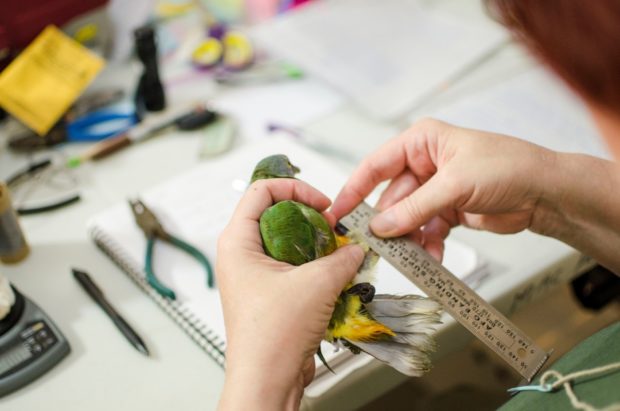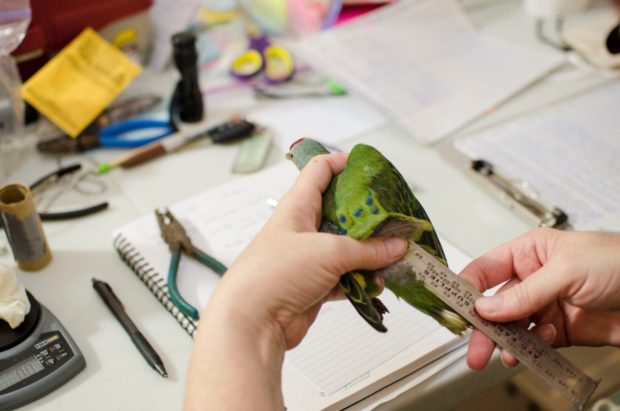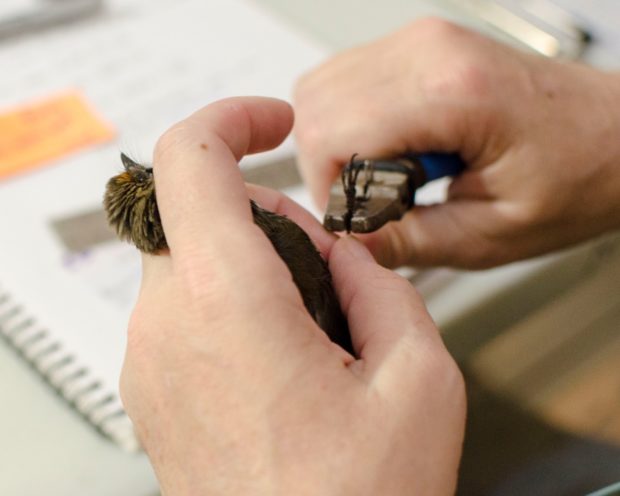Houston Zoo Bird Staff Saving Wildlife Part III
This blog was written by Kasey Clarke, a member of the Houston Zoo’s Bird Department. Kasey received a Staff Conservation Fund grant from her coworkers at the Houston Zoo to carry out a wildlife-saving project for birds in the Mariana Islands (a chain of islands in the western North Pacific Ocean). We will be posting a series of blogs as Kasey documents her work overseas.
The process described below is part of the Mariana Conservation Program to relocate local bird species to neighboring islands that do not have the invasive brown tree snake, an introduced species that preys upon native birds.

When the birds come in from the field, it’s time for some important record-keeping. The birds are banded, weighed, and their wings, legs, and tails are measured. They are also given a physical to make sure they are in good body condition. We check for signs of nesting as well (such as a bare spot on their belly). Each bird gets a metal band with a unique number engraved on it. This helps us to identify each bird and more easily keep track of them as we feed and monitor their condition. Below are several photos of the process for both the fruit dove and the rufous fantail that we met in the previous blog entry.






After they receive their physical they are placed in their own individual box. The dove boxes are larger than the boxes for the fantails because they are much larger birds. They will then travel to Guguan (another island in the Mariana region). This travel time also gives us a chance to collect feather, blood, and fecal samples in order to determine sex and the stress level of every bird. Disney Animal Kingdom sends a team from their veterinary clinic to collect these samples for a study they are doing on cortisol (stress hormone) levels. I will go more in depth on the process of the medical exams next time.


Every day the fruit doves are fed a mixture of papaya, Kaytee exact high fat formula, and water. This is done three times a day. The rufous fantails get fed meal worms and flies four times a day. The idea is to have them eat consistently to ensure they are as healthy as possible throughout their journey.
Next time we will see our rufous fantail friend get a medical exam.
